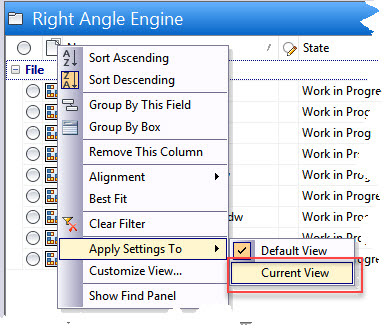The location of the mounting holes on the side panel, in the drawing, is also a very easy task since all drawing views are parametrically related to the model. As I was placing the dimensions, I started wondering how I could accurately locate the hole centers on the actually fabricated part. Adding to the task is the fact all the dimensions ended up in 1/64 of an inch!
My first thought of a way to make this task very easy was simply create a full size drawing view and plot it at full scale to make a hole location template. The idea faded since I only have a 8.5" X 11" Laserjet plotter. Then I remember that Inventor has the ability to print full size (1:1) using "tiling". This is such a great feature, I wanted to share it with my readers.
I created a second sheet, in my drawing, to place a 1:1 scaled view of the hole layout. I used a B-Size sheet (17" X 11") which is large enough to show the hole layout area and one relative corner of the side panel. I removed the drawing border and title block from by deleting them from the browser since they serve no purpose in the drawing. I then added some notes to two edges to help me identify the template placement on the side panel.
I am now ready to configure the 1:1 "titled" plot. Selecting the "Print" command from the Quick Assess toolbar, or from the Application Menu, I configure the plot as shown making sure to place a check mark in the "Tiling enabled" box. This feature is only available if your plot scale is "Model 1:1".
Selecting "OK" Inventor sends 4 sheets to the printer each one containing a different "titled" section of the drawing. Each sheet is labeled according to its number and position and alignment points are also added to make it an easy task to tape up a completed template. I obviously cannot show the printout but I can show you the preview of the plot.
I can easily use the template to layout my holes resting assure that the accuracy will be far better than trying to use a 1/64" divided ruler.



























































